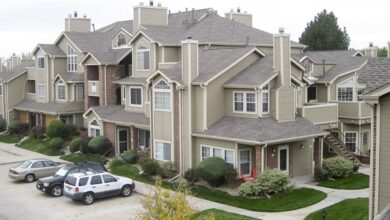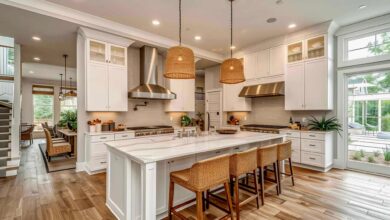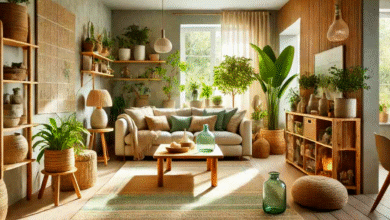Basement Remodeling Ideas to Maximize Space
Basement Remodeling Ideas to Maximize Space
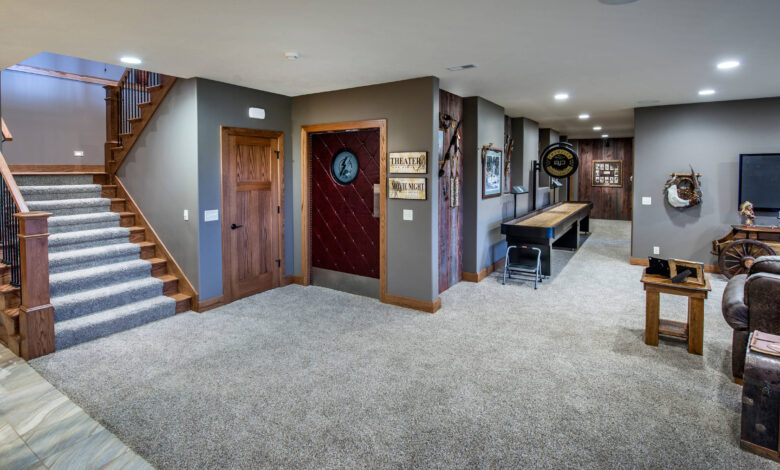
The basement remodeling landscape has transformed dramatically, with homeowners recognizing the untapped potential lying beneath their feet. No longer relegated to storage areas or forgotten corners, modern finished basements represent valuable square footage that can significantly enhance both your lifestyle and property value. As housing costs continue to rise and living spaces become more precious, maximizing basement space has emerged as one of the most cost-effective home improvement strategies available today.
Recent trends show that basement renovation projects can yield impressive returns on investment, often adding 70-75% of the project cost to your home’s value. Whether you’re working with a small basement or a sprawling subterranean area, the key lies in strategic planning and creative space optimization. The beauty of basement finishing projects is their versatility – these below-grade spaces can accommodate virtually any function, from entertainment hubs to productive workspaces, guest accommodations to fitness centers.
Modern basement design ideas embrace open-concept layouts, multi-functional furniture, and innovative storage solutions that transform cramped quarters into spacious, inviting environments. By incorporating contemporary basement interior design principles, homeowners can create seamless transitions between upstairs and downstairs living areas, effectively doubling their usable square footage. The integration of proper lighting, moisture control, and thoughtful basement layout planning ensures these transformed spaces feel as comfortable and welcoming as any main-floor room.
Today’s basement remodeling trends emphasize sustainability, energy efficiency, and adaptability, with many projects incorporating smart technology and flexible design elements that can evolve with changing family needs. From budget-conscious DIY approaches to luxury basement renovations, the possibilities are limited only by your imagination and local building codes.
Understanding Your Basement Remodeling Ideas
Before diving into specific basement remodeling ideas, it’s crucial to assess your space’s current condition and structural limitations. Every basement renovation project begins with a thorough evaluation of moisture levels, ceiling height, existing plumbing and electrical systems, and natural light sources. These factors will significantly influence your basement design choices and overall project scope.
Moisture control represents the foundation of any successful basement finishing project. Addressing humidity issues, waterproofing concerns, and proper ventilation should be your priority. Even the most creative basement ideas will fail if moisture problems persist, leading to mold, mildew, and structural damage over time. Professional moisture assessment and remediation ensure your finished basement remains comfortable and healthy for years to come.
Ceiling height plays a critical role in determining which basement layout options are feasible. Standard finished ceiling heights should measure at least 7.5 feet, though 8-9 feet provides more comfortable living conditions. Small basement spaces with lower ceilings can still be transformed into functional areas through creative design strategies like exposed ceiling treatments, strategic lighting placement, and furniture selection that emphasizes horizontal rather than vertical elements.
Creative Small Basement Ideas
Small basement spaces require ingenious solutions to maximize every square inch of available area. The key to successful small basement remodeling lies in embracing multi-functional design principles and selecting space-saving elements that serve multiple purposes. Built-in storage solutions, fold-down furniture, and vertical organization systems can dramatically increase your basement’s functional capacity without overwhelming the space.
Multi-purpose furniture represents one of the most effective strategies for maximizing basement space. Ottoman storage cubes provide seating, storage, and table surfaces simultaneously. Wall-mounted desks can fold down when needed for work and disappear when entertaining. Murphy beds transform home offices into guest bedrooms instantly, while sectional sofas with built-in storage compartments maximize seating capacity while hiding clutter.
Vertical storage solutions capitalize on often-overlooked wall space in basement renovations. Floor-to-ceiling shelving units, wall-mounted cabinets, and hanging organizers draw the eye upward, creating the illusion of greater height while providing essential storage capacity. Installing floating shelves at varying heights adds visual interest while accommodating different storage needs, from books and decorative items to seasonal belongings.
Light-colored paint schemes and strategic mirror placement can visually expand small basement areas beyond their actual dimensions. Pale blues, soft grays, and warm whites reflect available light sources, creating an airier atmosphere that feels more spacious and welcoming. Large mirrors positioned opposite windows or light sources amplify natural and artificial illumination, further enhancing the sense of openness.
Modern Basement Layout Designs
Contemporary basement layout trends favor open-concept designs that maximize flow and flexibility throughout the space. By minimizing interior walls and creating defined zones rather than separate rooms, homeowners can achieve greater functionality while maintaining the spacious feel that makes finished basements so appealing. This approach works particularly well for basement remodeling projects that serve multiple purposes simultaneously.
Zone-based basement design allows different areas to serve distinct functions while maintaining visual continuity throughout the space. An entertainment zone might feature comfortable seating arranged around a media center, while an adjacent workspace includes a built-in desk and storage solutions. Exercise areas can be defined through equipment placement and specialized flooring materials, while reading nooks utilize strategic lighting and comfortable furnishings to create intimate retreat spaces.
Traffic flow considerations are essential when planning your basement layout. Clear pathways between different zones prevent the space from feeling cramped while ensuring easy access to all areas. Strategic placement of furniture and fixtures creates natural circulation patterns that guide movement through the space without creating bottlenecks or awkward navigation challenges.
Flexible basement layouts incorporate moveable elements that allow the space to adapt to changing needs and activities. Rolling storage units, wheeled furniture pieces, and modular seating arrangements enable quick reconfiguration for different occasions, maximizing the basement’s versatility and long-term usability.
Smart Storage Solutions
Effective storage planning forms the backbone of successful basement remodeling projects, particularly when maximizing space is the primary objective. Basement storage ideas should blend seamlessly with your overall design aesthetic while providing practical solutions for organizational challenges. The key lies in identifying underutilized areas and transforming them into valuable storage opportunities.
Under-stair storage represents one of the most overlooked opportunities in basement renovations. This awkward space can accommodate everything from seasonal decorations to cleaning supplies, wine collections to home office materials. Custom-built solutions maximize the available volume while maintaining easy access, while prefabricated organizers provide cost-effective alternatives for budget-conscious projects.
Built-in storage solutions offer superior space efficiency compared to freestanding alternatives. Floor-to-ceiling closet systems, integrated entertainment centers, and custom shelving units utilize every available inch while creating clean, streamlined appearances that enhance your basement’s visual appeal. These permanent installations also add significant value to your home, making them worthwhile investments for most basement finishing projects.
Hidden storage opportunities abound in finished basements, from hollow window seats that provide additional seating and concealed storage to coffee tables with lift-top surfaces that reveal spacious interior compartments. Bench seating along walls can incorporate hidden storage compartments, while decorative room dividers might feature integrated shelving or display areas.
Lighting Strategies for Basement Spaces
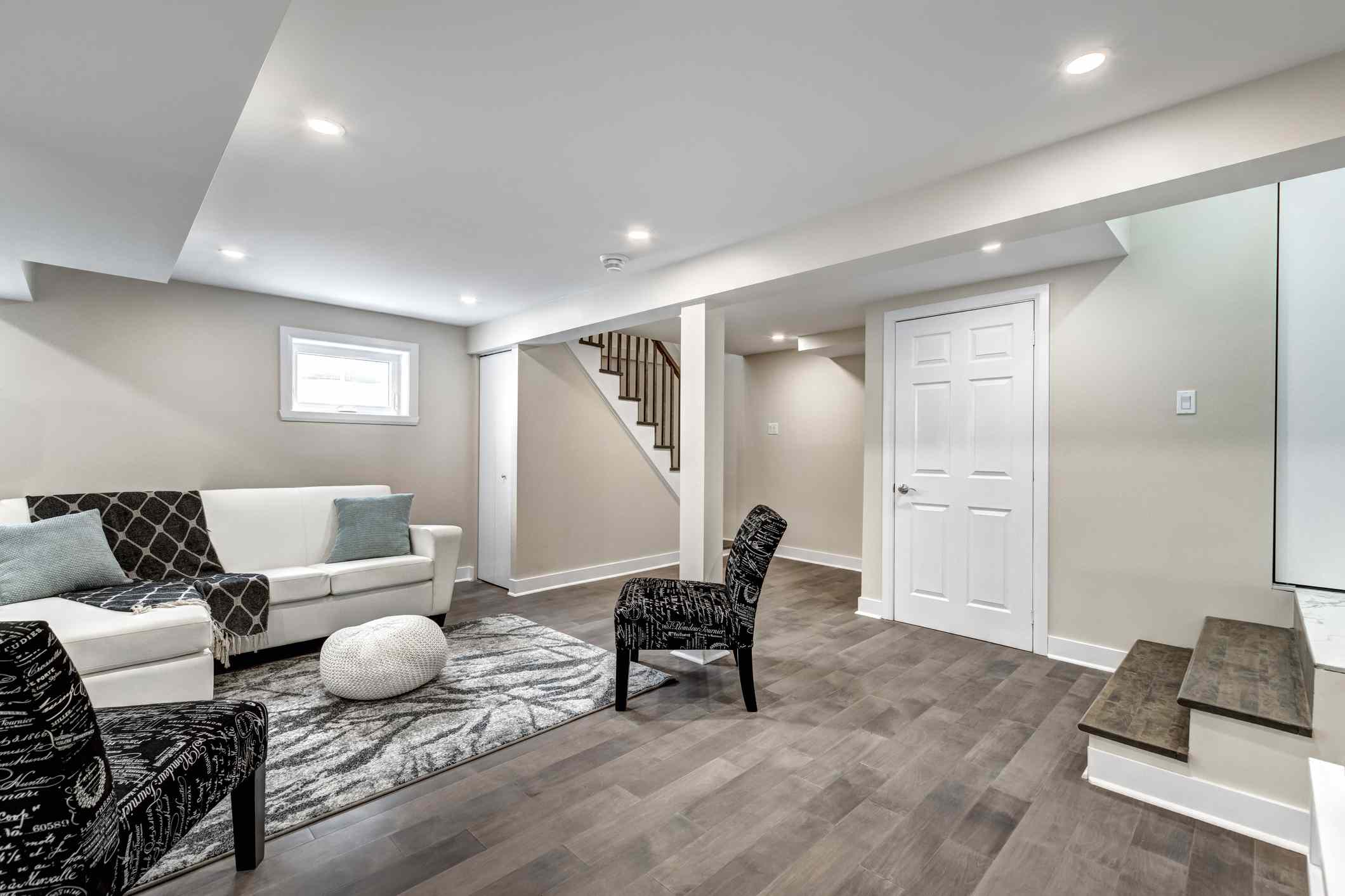
Proper lighting design can make or break a basement remodeling project, particularly in spaces with limited natural light sources. Layered lighting approaches combine ambient, task, and accent illumination to create bright, welcoming environments that feel connected to upstairs living areas. Strategic basement lighting choices can visually expand small spaces while highlighting architectural features and design elements.
Natural light optimization should be your first priority when planning basement renovation lighting schemes. Existing windows can be enlarged where structurally feasible, while window wells might be expanded or redesigned to capture more sunlight. Light-colored window treatments maximize daylight penetration while maintaining privacy, and reflective surfaces near windows amplify available natural illumination throughout the space.
Recessed ceiling lights provide excellent general illumination for finished basements without consuming valuable headroom. These fixtures work particularly well in spaces with lower ceiling heights, where pendant lights or chandeliers might feel overwhelming. Strategic spacing ensures even light distribution while multiple switching circuits enable customized lighting levels for different activities and moods.
Task lighting addresses specific functional requirements within your basement design. Under-cabinet lights illuminate workspace surfaces, while reading lamps provide focused illumination for comfortable book enjoyment. Adjustable track lighting systems offer flexible solutions that can be redirected as your space’s uses evolve, making them ideal for multi-purpose basement layouts.
Moisture Control and Ventilation
Successful basement remodeling projects require comprehensive moisture management strategies that address both existing conditions and prevention of future problems. Even minor moisture issues can undermine the most beautiful basement renovation, leading to mold growth, material damage, and unhealthy indoor air quality. Professional assessment and proper remediation form the foundation of any lasting basement finishing project.
Waterproofing solutions vary depending on your basement’s specific conditions and local climate factors. Exterior waterproofing provides the most comprehensive protection but requires significant excavation and expense. Interior solutions like waterproof coatings, drainage systems, and vapor barriers offer more affordable alternatives that can effectively address many moisture concerns when properly installed.
Proper ventilation ensures your finished basement maintains healthy air quality while preventing humidity buildup that can lead to moisture problems. Mechanical ventilation systems, including exhaust fans and whole-house ventilation units, provide consistent air circulation that removes excess moisture and indoor pollutants. Natural ventilation through windows and vents can supplement mechanical systems when weather conditions allow.
Dehumidification equipment represents a crucial component of basement moisture control, particularly in humid climates or during certain seasons. Properly sized dehumidifiers maintain optimal humidity levels that prevent mold growth while ensuring comfort. Some units can be integrated with HVAC systems for whole-house humidity control, providing seamless operation and enhanced efficiency.
Budget-Friendly Basement Renovation Ideas
Basement remodeling doesn’t have to break the bank when you focus on high-impact improvements that maximize visual transformation while minimizing costs. Strategic planning and prioritization enable homeowners to achieve dramatic results through careful selection of materials, fixtures, and design elements. DIY-friendly projects can significantly reduce labor costs while providing satisfying hands-on involvement in your basement renovation.
Paint represents the most cost-effective transformation tool for any basement remodeling project. Fresh coats of light-colored, moisture-resistant paint can completely change the space’s appearance while protecting against humidity and minor moisture issues. Specialty basement paints offer enhanced durability and mold resistance, making them worthwhile investments for below-grade applications.
Laminate and luxury vinyl flooring provide attractive, affordable alternatives to traditional hardwood or ceramic tile in finished basements. These materials offer excellent moisture resistance, easy installation, and a realistic appearance that mimics more expensive options. Many products feature click-lock installation systems that make them ideal for DIY projects, further reducing overall project costs.
Strategic lighting upgrades deliver dramatic improvements in basement ambiance and functionality without requiring major electrical work. Battery-operated LED fixtures, plugin track lighting systems, and updated lamp selections can transform dark, unwelcoming spaces into bright, cheerful environments. Solar-powered options work well for areas with access to natural light during charging periods.
Home Office and Workspace Solutions
The rise of remote work has created unprecedented demand for dedicated home office spaces, making basement remodeling for workspace creation increasingly popular. Basement home office designs can provide quiet, private environments that enhance productivity while keeping work life separate from main living areas. Proper planning ensures these spaces meet both functional requirements and comfort standards for extended use.
Ergonomic considerations play crucial roles in basement office design, particularly regarding seating, desk height, and computer screen positioning. Adjustable furniture elements accommodate different users and tasks, while proper lighting reduces eye strain during extended work sessions. Temperature control and air circulation ensure year-round comfort in below-grade work environments.
Technology infrastructure requirements for modern basement offices include reliable internet connectivity, adequate electrical outlets, and appropriate cable management solutions. Hardwired internet connections typically provide more reliable service than wireless options, while dedicated circuits prevent electrical overloads during high-demand periods. Built-in cable management keeps workspaces organized and professional in appearance.
Storage and organization systems help maintain productivity and professional appearance in basement workspaces. Built-in filing systems, bookcases, and supply storage keep essential materials accessible while maintaining clean, uncluttered work surfaces. Acoustic treatments like area rugs, wall hangings, and upholstered furniture help control sound transmission to upper floors.
Entertainment and Media Rooms
Basement entertainment spaces offer unique opportunities to create immersive environments dedicated to relaxation and enjoyment. Home theaters, game rooms, and multi-purpose entertainment areas can transform unused basement space into family gathering hubs that enhance your home’s social functionality. These spaces benefit from the natural sound isolation that below-grade locations provide.
Home theater design in finished basements requires careful attention to acoustics, lighting control, and seating arrangements. Carpet or area rugs help absorb sound while providing comfortable flooring surfaces. Blackout window treatments and dimmable lighting systems create optimal viewing conditions, while tiered seating arrangements ensure everyone enjoys clear sightlines to screen areas.
Gaming and recreation areas within basement renovations can accommodate various activities through flexible furniture arrangements and strategic equipment placement. Pool tables, ping pong tables, and arcade games require specific space allowances and electrical requirements. Comfortable seating areas provide spectator space and relaxation zones between active periods.
Multi-media storage solutions keep entertainment equipment, games, movies, and accessories organized while maintaining clean, uncluttered appearances. Built-in entertainment centers can house audio/video equipment while providing display space for collections and decorative items. Hidden storage compartments keep less attractive items concealed while maintaining easy access.
Guest Bedroom and Living Spaces
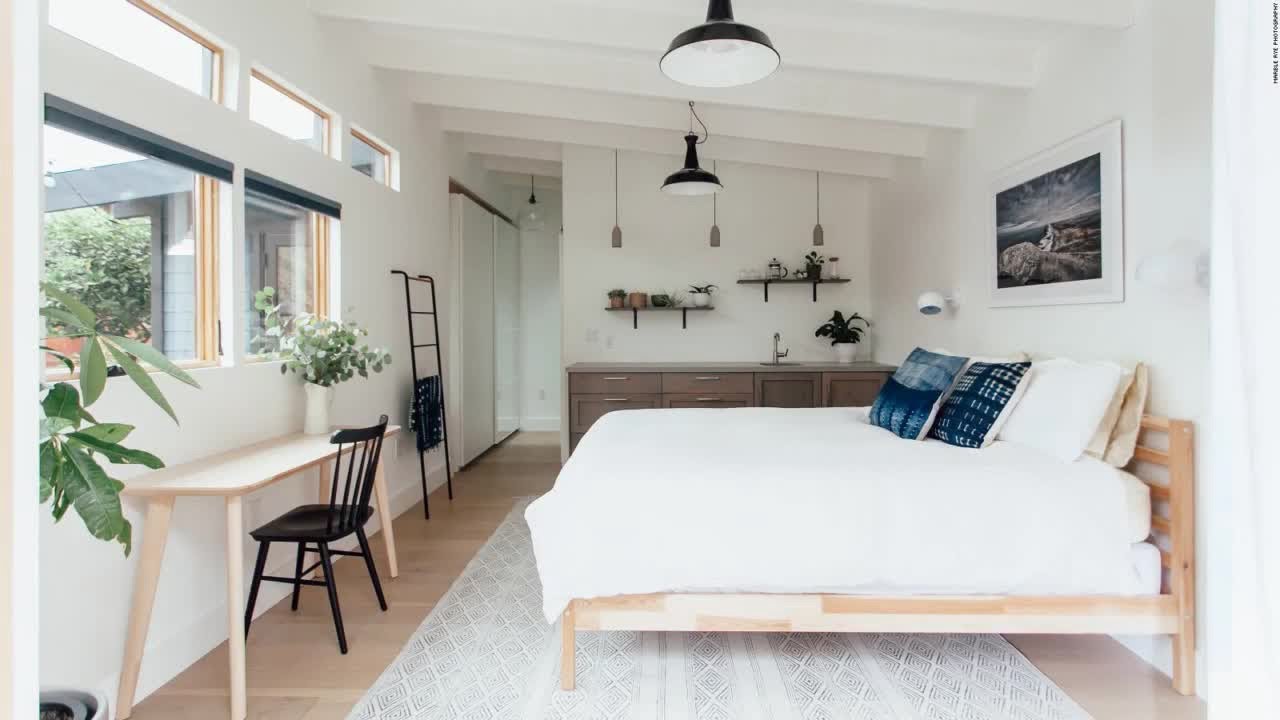
Converting basement areas into guest bedrooms provides valuable additional accommodation while maximizing your home’s functional capacity. Basement guest suites can offer privacy and comfort that rivals main-floor accommodations when properly planned and executed. Building code compliance, including egress window requirements and ceiling height standards, ensures these spaces meet safety and legal requirements.
Bedroom layout planning in basement spaces requires careful consideration of natural light sources, ventilation, and privacy needs. Egress windows provide essential safety features while delivering natural light and emergency exit capabilities. Proper insulation and moisture control ensure year-round comfort, while sound management strategies maintain privacy for both guests and family members.
Bathroom addition to the basement guest areas significantly enhances convenience and privacy for visitors. Half-baths provide essential facilities without requiring extensive plumbing modifications, while full bathrooms create true suite accommodations. Proper ventilation and moisture control are particularly critical in basement bathroom installations.
Storage solutions for basement bedrooms should accommodate both permanent storage needs and guest convenience. Built-in closets provide hanging and folding space, while bedside tables and dressers offer practical storage for personal items. Luggage storage areas and additional blanket/pillow storage enhance guest comfort and convenience.
Fitness and Wellness Areas
Basement fitness rooms capitalize on the privacy and dedicated space that below-grade areas provide for exercise and wellness activities. Home gyms, yoga studios, and meditation spaces can transform unused basement areas into health-focused environments that support active lifestyles. Proper planning addresses ventilation, flooring, and equipment requirements specific to fitness applications.
Flooring selection for basement exercise areas requires materials that provide appropriate cushioning, traction, and durability while resisting moisture and damage from exercise equipment. Rubber flooring, interlocking foam tiles, and specialized athletic surfaces offer excellent performance characteristics while providing comfortable exercise surfaces. Easy cleaning and maintenance ensure long-term hygiene and appearance.
Ventilation and temperature control become particularly important in basement fitness spaces where physical activity generates heat and humidity. Mechanical ventilation systems remove excess moisture and maintain air quality, while heating and cooling systems ensure year-round comfort. Ceiling fans provide additional air circulation during intense workout sessions.
Equipment storage and organization keep basement gyms functional and safe while maintaining a clean appearance. Wall-mounted storage systems accommodate smaller equipment and accessories, while dedicated areas house larger items like treadmills and weight systems. Mirrors enhance the sense of space while providing functional benefits for exercise form monitoring.
More Read: Top-Rated Kitchen Remodel Experts Near You
Conclusion
Basement remodeling ideas offer virtually unlimited potential for maximizing space and enhancing your home’s functionality, comfort, and value. Whether you’re transforming a small basement into a cozy retreat or converting a sprawling area into a multi-functional living space, success depends on thoughtful planning, proper moisture control, and creative design solutions that address your family’s specific needs.
From budget-friendly DIY projects to comprehensive basement renovations, these below-grade spaces represent some of the most cost-effective square footage available in your home, capable of serving as home offices, entertainment centers, guest accommodations, fitness areas, or any combination of functions your lifestyle requires.
By incorporating modern basement design trends, implementing smart storage solutions, and ensuring proper lighting and ventilation, your finished basement can become one of your home’s most valued and frequently used spaces, delivering long-term satisfaction and impressive returns on your improvement investment.


